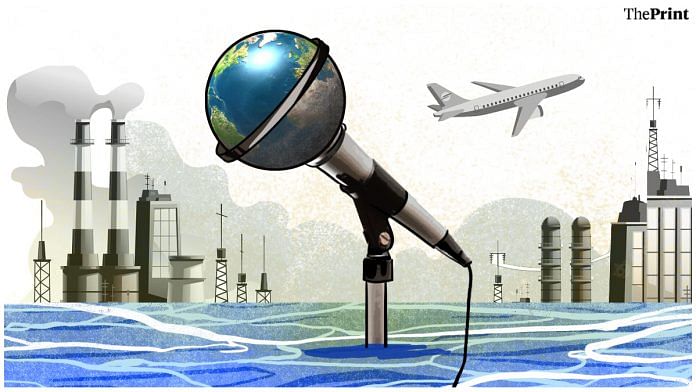There is a weary predictability to global environment conferences. The prospect of Armageddon is held out, many words are spoken, some commitments are made to prevent a last-minute collapse of talks, and exhausted delegates eventually go home. Then all too little happens.
Even less would happen if there were no conference pressure to set targets. Precisely for that reason, the conference record of the past 50 years (since the first environment conference at Stockholm in 1972) inclines one towards environment pessimism.
Still, it would be wrong to think that nothing has been achieved. A great deal has, though far too slowly — for which lack of speed the world, especially its poor, will pay the price.
The global scenario is comparable in a way to how Delhi and its surroundings become a poisonous gas chamber every winter. Disaster was predicted for decades, and some corrective action was taken, but the reality today is a disaster.
When the Club of Rome published “Limits to Growth” in 1972, the book sold in vast numbers but its central message was also derided by many. While the book brought pollution and resource depletion into focus, the Stockholm conference that same year was belittled by many experts, especially in the West. Though more than a hundred countries took part, only two heads of government attended: The host country’s and Indira Gandhi. But she gave the wrong message for the occasion by saying that poverty was the greatest polluter.
Nevertheless, it was a path-breaking event. To mark its twentieth anniversary, the “Earth Summit” at Rio de Janeiro in 1992 drew up the Framework Convention on Climate Change.
More conferences led to the Kyoto Protocol of 1997, which asked some three dozen developed economies to reduce their carbon emissions below the base level of 1990. Ratification took eight years, till 2005, with emission targets set periodically.
As each target was missed, and the base year reset, there followed yet more conferences (Copenhagen-2009, Paris-2015, etc). Now principles were junked along with targets, the most important being that the principal polluters are primarily responsible for limiting and undoing the damage. Some now scoff at the very idea.
Also read: With govt data becoming undependable & infrequent, private sources become a goldmine for India
So where are we? The world is 80 per cent of its way to the disaster limit of temperatures rising 1.5 degrees Celsius above pre-industrial levels. Since emissions will continue even after that red line is crossed, peak temperature up to 2 degrees above pre-industrial levels seems plausible.
The world is two-thirds of its way there in terms of total carbon load in the atmosphere. So climate change is upon us. Hundreds of millions of people, mostly poor, will pay the price. Many parts of the world will become uninhabitable. The destruction of species will accelerate. Governments will find they don’t have the resources to deal with the ecological, economic, and human consequences. That will compound the disaster.
The good news is that many wealthy, post-industrial economies have started dropping their emission levels. Many more (including India) have reduced the energy-intensity of economic activity, even as the energy used is getting cleaner. The “net zero” goal is still decades off, but even the inevitably messy goal-setting for achieving net zero has been a (belated) breakthrough.
What are the lessons of these 50 years? First, despite bloviation at conferences like the one now on at Sharm el-Sheikh, such meetings do occasionally move the needle — though usually too little too late. Sometimes the needle moves backwards, as when a Ukraine war happens, prodding anti-coal countries to re-activate thermal power stations. Second, despite repeated promises, no rich country is going to pay any significant sum to help poor countries deal with climate change, though the poor did not cause the problem.
Third, very few are willing to change their carbon-emitting lifestyles (starting with food habits). Without that, technology will provide some solutions but never a complete answer. Finally, the destructive aspect of “growth” will not get tackled until national accounts are re-defined to include in the maths the damage done to natural assets. Such re-definition and inclusion were recommended by a committee headed by the Cambridge don, Partha Dasgupta, in 2013. Its report lies forgotten in the environment ministry.
By special arrangement with Business Standard
Also read: Should India go big or small? Lessons from governments of the UK and East Asian countries



